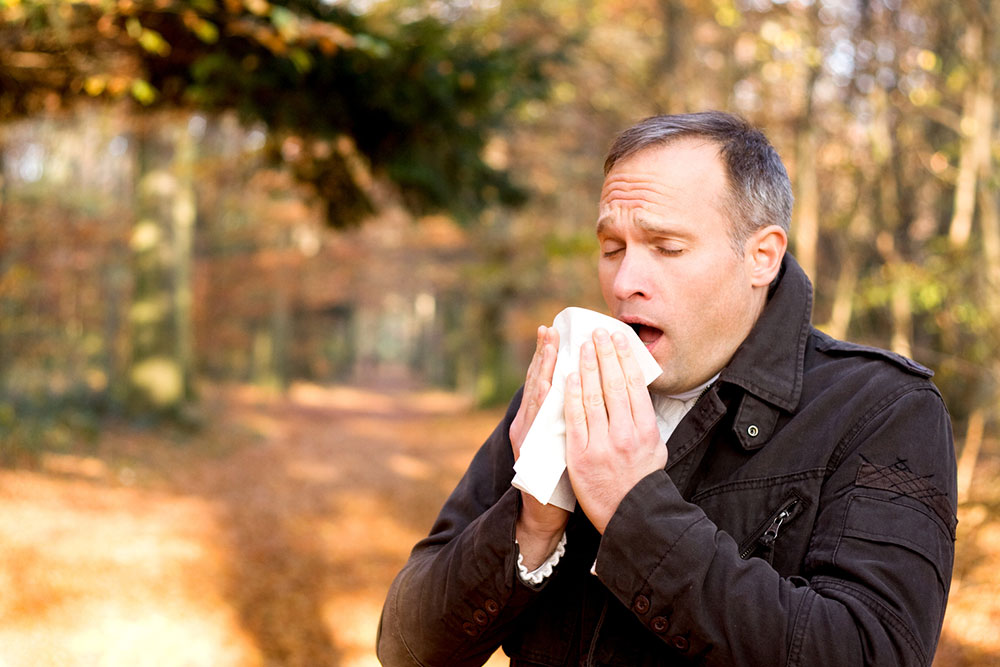Comprehensive Guide to Meningitis: Causes, Risk Factors, Symptoms, and Prevention Strategies
Learn about meningitis, its causes, risk factors, symptoms, and effective prevention strategies. This comprehensive guide emphasizes early diagnosis, treatment options, and vaccination importance to combat this serious condition. Protect yourself and your loved ones by understanding how meningitis spreads and how to prevent it effectively.

Comprehensive Guide to Meningitis: Causes, Risk Factors, Symptoms, and Prevention Strategies
Meningitis is a serious medical condition characterized by the inflammation of the meninges — the protective membranes covering the brain and spinal cord. This inflammation can develop rapidly and, if not diagnosed and treated promptly, can lead to severe complications such as brain swelling, permanent neurological damage, or even death. Understanding its causes, risk factors, symptomatology, and prevention methods is essential for individuals, caregivers, and healthcare professionals alike.
Meningitis can arise from various infectious agents, including bacteria, viruses, fungi, and in some rare instances, reactions to medications or exposure to environmental toxins and heavy metals. The diversity of causes makes diagnosis and treatment complex, emphasizing the importance of early recognition and intervention.
Types of Meningitis and Their Causes
The most common types of meningitis are bacterial, viral, and fungal, each with unique characteristics and implications for treatment. Bacterial meningitis is often considered the most severe and contagious form, caused predominantly by organisms such as Streptococcus pneumoniae and Neisseria meningitidis. These bacteria can spread through respiratory droplets, saliva, or mucus, making close contact situations like dormitories, military barracks, or crowded households high-risk environments.
Viral meningitis, by contrast, tends to be less severe and often resolves without specific antiviral treatment. Enteroviruses are the leading cause of viral meningitis, transmitting via contaminated food, water, or contact with infected surfaces or individuals. The virus can also be spread through coughing and sneezing. Although viral meningitis is generally less dangerous, it still requires medical attention to manage symptoms and prevent complications.
Fungal meningitis is less common but more prevalent among immunocompromised individuals, such as those with HIV/AIDS, cancer patients, or organ transplant recipients. Fungal pathogens like Cryptococcus neoformans can invade the central nervous system, often linked to fungal infections elsewhere in the body. Notably, certain steroid injections have been associated with outbreaks of fungal meningitis, emphasizing the need for sterile medical practices.
Additionally, reactions to certain medications, environmental toxins, and heavy metals, although rare, can induce meningitis-like symptoms or inflammations of the meninges, complicating diagnosis.
Risk Factors and Vulnerable Populations
While anyone can develop meningitis, particularly vulnerable groups include infants, young children, adolescents, and the elderly. Children are especially susceptible to Haemophilus influenzae type b, which historically was a common cause of bacterial meningitis in children before widespread vaccination.
Neonates are at risk of meningitis transmitted during childbirth, often from mothers who are asymptomatic carriers of bacteria. Close contact with infected individuals or contaminated environments increases risk significantly.
Immunocompromised populations, such as those undergoing chemotherapy, living with HIV/AIDS, or on immunosuppressive drugs, face higher susceptibility to fungal and certain bacterial infections. Exposure to contaminated food, water, or environmental sources like rodents and insects also raises infection risks. Moreover, activities leading to increased exposure, such as intravenous drug use or participation in crowded settings, elevate the chance of contracting the disease.
Transmission Pathways
Meningitis transmission primarily occurs through respiratory droplets or saliva, making close and prolonged contact the main risk factor. For example, sharing utensils, kissing, or coughing in shared spaces facilitates the spread of meningitis-causing bacteria and viruses. It can also spread during childbirth if the mother is colonized with bacterial pathogens, transferring the infection to the newborn.
Other routes include contact with contaminated surfaces, which may harbor infectious agents, or bites from rodents and insects that might carry certain fungal or bacterial pathogens. Blood transfusions and contaminated medical equipment, if not properly sterilized, can also serve as transmission routes, particularly for fungal and bacterial meningitis.
Symptoms and Signs of Meningitis
Recognizing early symptoms of meningitis is vital for timely medical intervention. Common signs include sudden high fever, severe headache, neck stiffness, sensitivity to light (photophobia), nausea, vomiting, and altered mental status such as confusion or drowsiness. In infants and young children, symptoms may manifest as irritability, poor feeding, bulging fontanelles, or seizures.
Viral meningitis may present with milder symptoms, whereas bacterial meningitis often causes rapid deterioration, requiring urgent medical attention. It is crucial to seek immediate healthcare if meningitis is suspected, as delays can lead to devastating outcomes, including permanent neurological damage or death.
Diagnostic Techniques
Diagnosis involves a combination of clinical assessment and laboratory investigations. Healthcare providers utilize blood tests, cerebrospinal fluid analysis through lumbar puncture (spinal tap), aided by imaging techniques such as MRI and CT scans to exclude other causes and assess brain involvement.
Blood cultures can identify bacterial or fungal pathogens, while PCR (polymerase chain reaction) testing can detect viral DNA or RNA. These diagnostic tools help determine the exact cause of meningitis, guiding targeted treatment strategies.
Treatment Options and Management
The treatment approach varies based on the type of meningitis. Bacterial meningitis requires immediate administration of broad-spectrum antibiotics and corticosteroids to reduce inflammation and prevent complications. Early intervention, ideally within the first hour of presentation, significantly improves survival rates and neurological outcomes.
Viral meningitis often resolves spontaneously with supportive care, including bed rest, hydration, and over-the-counter medications to control fever and pain. Severe cases with viral etiologies may sometimes require antiviral agents, depending on the specific virus involved. Fungal meningitis necessitates antifungal medications, often administered intravenously, especially in immunocompromised patients.
In all cases, hospitalization is frequently necessary for close monitoring, supportive therapy, and management of complications like seizures or increased intracranial pressure. Patients with meningitis should complete the full course of prescribed treatments and are advised to avoid close contact with others until the infectious period has passed.
Prevention Strategies
Prevention is vital to reduce the incidence of meningitis, especially in high-risk populations. Vaccination against key bacterial pathogens such as Haemophilus influenzae type b (Hib), Streptococcus pneumoniae, and Neisseria meningitidis has significantly decreased bacterial meningitis cases worldwide.
Good hygiene practices, including regular handwashing, proper respiratory etiquette (covering coughs and sneezes), and avoiding sharing utensils or personal items, help limit the spread of infectious agents. Sterile medical procedures and safe injection practices are essential in preventing healthcare-associated fungal and bacterial infections.
Immunocompromised individuals should seek regular medical care, follow vaccination schedules diligently, and avoid exposure to known environmental sources of infection. In outbreak situations, public health interventions, including prophylactic antibiotics or booster vaccinations, may be implemented to contain spread.
Overall, awareness and early detection remain crucial tools in minimizing the impact of meningitis. Recognizing the symptoms early and seeking prompt medical care can save lives and prevent permanent disabilities.





